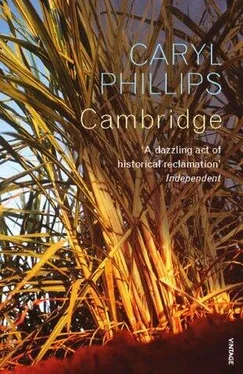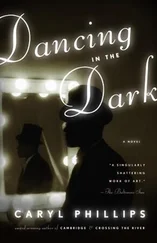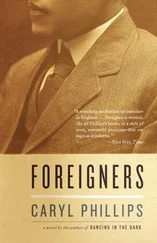Caryl Phillips - Cambridge
Здесь есть возможность читать онлайн «Caryl Phillips - Cambridge» весь текст электронной книги совершенно бесплатно (целиком полную версию без сокращений). В некоторых случаях можно слушать аудио, скачать через торрент в формате fb2 и присутствует краткое содержание. Год выпуска: 2009, Издательство: Vintage Digital, Жанр: Современная проза, на английском языке. Описание произведения, (предисловие) а так же отзывы посетителей доступны на портале библиотеки ЛибКат.
- Название:Cambridge
- Автор:
- Издательство:Vintage Digital
- Жанр:
- Год:2009
- ISBN:нет данных
- Рейтинг книги:5 / 5. Голосов: 1
-
Избранное:Добавить в избранное
- Отзывы:
-
Ваша оценка:
- 100
- 1
- 2
- 3
- 4
- 5
Cambridge: краткое содержание, описание и аннотация
Предлагаем к чтению аннотацию, описание, краткое содержание или предисловие (зависит от того, что написал сам автор книги «Cambridge»). Если вы не нашли необходимую информацию о книге — напишите в комментариях, мы постараемся отыскать её.
Cambridge — читать онлайн бесплатно полную книгу (весь текст) целиком
Ниже представлен текст книги, разбитый по страницам. Система сохранения места последней прочитанной страницы, позволяет с удобством читать онлайн бесплатно книгу «Cambridge», без необходимости каждый раз заново искать на чём Вы остановились. Поставьте закладку, и сможете в любой момент перейти на страницу, на которой закончили чтение.
Интервал:
Закладка:
Dinners upon Father's estate have always been lavish, yet these days they seem, if anything, to have increased in grandeur. Mr Brown and I share a now familiar bountiful supper. The daily feast offers kid, lamb, poultry, pork and a variety of fish. I have adjusted myself to tolerate poorly dressed meat served without butter, unless a shipment from Ireland or England happens to have been freshly landed (although fresh it is unlikely to be after such a voyage). As usual the turtle forms the centre-piece of these dinners, but increasingly crab and lobster are being offered up for our delight. The odour of the slaves who attend us is also somewhat improved. The swarms of fleas that commonly cohabit with our sable dependants appear to have taken up residence elsewhere. However, it is still a problem to persuade the blacks to wear shoes upon their feet. Mr Brown has confided to me that the negro feels more of a chattel when shod than he does when decked in chains, so greatly does he detest the footwear we take for granted. This preference in going barefoot also accounts for the lameness preponderant among the negroes, a consequence of infection by the chegoe.
The dessert is generally superior to the main course, the finest fruits being provided in abundance. Mr Brown took the trouble to explain to me the mysteries of two fruits which regularly grace our table. Apparently the shaddock contains thirty-two seeds, two of which will reproduce the fruit, but it is impossible to distinguish which two. The rest will between them yield some sweet oranges, some bitter, and some will bring forth forbidden fruit. In short, all varieties of orange are likely progeny of the shaddock, though no flavour is much alike. It is not until the trees start to bear that one is able to detect success or failure, for until this blessing the trees appear much the same. However, the seeds that happily reproduce the shaddock, even if taken from an exceptionally fine specimen, may bear only tolerable, or inferior fruit, some of which is scarcely edible. The mystery of the mango is no less baffling. Mr Brown tells me that the fruit of no two trees is the same, and that the seeds of the finest mango, though carefully sown and cultivated, seldom result in fruit comparable to the parent stock. At its best the mango is the queen fruit of the islands; at worst its flavour resembles turpentine and sugar. I enquired as to the possibility of returning to England bearing some seeds from which I might attempt to cultivate this exotic plant in my own little piece of England, but it seems I am likely to be disappointed.
Remarkably enough our exchanges have often continued until late in the evening, when we have sat upon the piazza sipping at dishes of tea, trying hard to ignore the mosquito-gentry who pay us close attention, especially after dusk. We are particularly careful to ensure that our conversation remains impersonal, neither of us wishing to spoil this new companionship. So Mr Brown speaks principally with me of West Indian affairs. In turn I explain, as best I can, what is afoot in England, which country, I am sad to learn, Mr Brown has not visited for some twenty or more years. His interest in England appears to be merely polite, and I think one might safely assume that he will bequeath his body to West Indian soil, among the people he seems to understand so well. As to the nature of the trade he is engaged in, I doubt if there is anybody who knows more man Mr Brown about the business of squeezing profit from a moderately sized plantation in the tropical zone. On this point everyone, from Stella to Mr McDonald, agrees. When I displayed interest in the technical procedures employed in cultivation of the cane, Mr Brown offered to escort me around the property, provided our tour began early the next morning. He also promised to show me the principal scenes of life on a sugar plantation.
Without King Sugar none would be here, neither black nor white. The method of sugar-cane production, upon which all tropical wealth depends, formed the elementary lesson of my day with Mr Brown. First, explained my master, the ripe canes are cut in the field and brought in bundles to the sugar mill, where the cleanest of the black women are employed to deliver the canes into the machines for grinding, while a solitary black woman draws them out at the other end once the juice has been extracted. She then throws the emaciated cane through an opening in the floor, where a pack of negroes is employed in bundling up this trash for use as fuel. The precious cane-juice gushes out of the grinding machine through a wooden gutter, and becomes quite white with foam. It streams into the boiling house, and enters a siphon where it is heated by the boiler. It is slaked with lime to encourage it to granulate. The scum rises to the top, while the purer and more fluid juice flows through another gutter into a second siphon or copper. When little but the scum on the surface remains, the gutter communicating with the first copper is blocked off. The remaining waste travels through a final gutter, which conveys it to the distillery. Here this solution is mixed with molasses or treacle to become rum.
The pure juice in the second copper is then fed back into the first, and then on into two more, each time more scum being removed from the surface with a copper skimmer pierced with holes. This enables the fresh juice to flow back into the coppers. When free from impurities, the juice is ladled into coolers where it is left to granulate. Sugar is formed in the curing house. As the sugar settles, the part of it that is too poor in quality or too liquid to granulate is allowed to drip off from the casks into vessels placed beneath them. These drippings form the molasses, which is taken into the distillery and mixed with the coarser scum to make rum, after two distillations. The first distillation produces only 'low wine'. Under the guidance of Mr Brown I was able to observe all the tools, utensils and instruments employed in this industry, but it not being the season I was unable to see the process in full operation. However, Mr Brown's explanation was so thorough that not only do I feel confident that I might explain the mysteries of this process to any stranger, but I am persuaded that I must myself have observed it in action!
The empty canes that form the trash are most commonly utilized as fuel. However, some canes are used for fodder or as thatching. The cane-tops are cut off and replanted in order to cultivate fresh growths. There is another method employed if one wishes to conserve time. It seems that after the original growths have been cut their roots throw up suckers, which mature to become canes. These are known as ratoons. They are much inferior in juice to the planted canes, but require less weeding and spare the negroes the only laborious part of the business of sugar-making, the excavation of holes for planting; however, an acre of ratoons will produce only one hogshead of sugar, while an acre of fresh plants will produce two. But the ratoons save time, effort and expense, and a thoroughgoing planter can cultivate five acres of ratoons in the time it will take him to cultivate one acre of plants. However, nature is not to be outdone and Mr Brown, with some regret, informed me that after four or five crops of ratoons this cyclical process is utterly exhausted and one is obliged to plant fresh cane-tops. That it was possible for one to extract even so much seemed to me one of nature's more generous bargains. Chief among accidents and injuries is burning, usually caused by drunken negroes stepping into the siphons in the boiling-houses. If the fire has not long been kindled the limb can generally be rescued, but sometimes there is little one can do, and the doctor is forced to resort to amputation, after which neither replanting nor ratoon will restore the limb.
Читать дальшеИнтервал:
Закладка:
Похожие книги на «Cambridge»
Представляем Вашему вниманию похожие книги на «Cambridge» списком для выбора. Мы отобрали схожую по названию и смыслу литературу в надежде предоставить читателям больше вариантов отыскать новые, интересные, ещё непрочитанные произведения.
Обсуждение, отзывы о книге «Cambridge» и просто собственные мнения читателей. Оставьте ваши комментарии, напишите, что Вы думаете о произведении, его смысле или главных героях. Укажите что конкретно понравилось, а что нет, и почему Вы так считаете.












